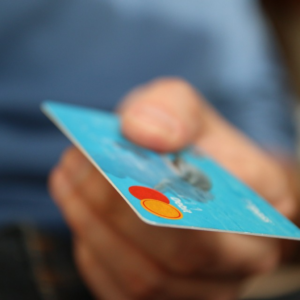 As frozen yogurt prices rise, an increasing number of frozen yogurt shops are offering flat rate pricing, either on a temporary basis or on a permanent basis.
As frozen yogurt prices rise, an increasing number of frozen yogurt shops are offering flat rate pricing, either on a temporary basis or on a permanent basis.
To understand the impact of this pricing model change, we consider how consumer behavior might change. To do this, it’s important to consider the interplay between consumer attitudes, moods, and beliefs on product evaluations, consumption, and repeat purchase likelihood.
Consumer Belief #1: The More You Pay for Something, the More You Must Like It
Research has shown that people who are aware of the cost of something they pay for are more likely to consume it. This is can be explained by the sunk cost fallacy. The sunk cost fallacy says that the behavior of people who invest time, money or effort in an endeavor changes because they do not want to “waste” their resources. The more they invest, the stronger this effect. Conversely, consumers tend to discount the perceived value of low cost items or items that they received for free.
Using frozen yogurt as an example, the person who spends $10 feels the pain of paying more than someone who spends $5. The more someone pays for a cup of frozen yogurt, the greater the sunk cost. In other words, we unconsciously try to justify the value of something we spent our hard-earned money on.
Consumer Belief #2: Things That Cost More Taste Better
More than just consumption behavior is affected by pricing though. Enjoyment also can also be impacted by the amount spent. The consumer who spent $10 for 10 oz of frozen yogurt is likely to enjoy consuming the frozen yogurt more than the one who spent $5 for the same amount of yogurt. Why, you ask?
Research from Just, Sigirci & Wansink (2014) has shown that people who paid less at an all you can eat buffet restaurant rated the food as less tasty and enjoyed the dining experience less than those who paid more for the same buffet experience. The researchers posited that people set taste expectations based on price. That is, if they paid less, they expected the food to be less tasty. In addition, those who paid less enjoyed the consumption experience less as they ate more. Think of the old adage, you get what you pay for.
Pricing Expectations and Moods
Consumer attitudes are complex. While we talked about how people who pay more generally perceive that they like the product more, there are exceptions to the rule. For example, the consumer who spent less for the same amount of frozen yogurt might be in a better mood and as a result, enjoy the consumption experience more. Research has found that the feeling of getting a bargain can lead to a more positive mood and higher evaluation of products (Lichtenstein, Netemeyer, and Burton 1990; Thaler 1985). Conversely, feeling that you’ve been ripped off likely leads to a negative mood which should lead to a more negative product evaluation.
We talked about low vs. high flat rate pricing but said little about pay by weight vs. flat rate pricing.
Beware of Adverse Selection
Frozen yogurt shops that offer flat rate pricing should be aware of the potential for adverse selection. Specifically, flat rate pricing is more attractive to people who are capable of consuming more frozen yogurt either because they have bigger appetites and/or they are bargain hunters. These consumers prefer flat rate pricing because they get a better deal when they consume more.
Most people go to frozen yogurt shops with groups and chances are that not everyone in the group has a big appetite or is a bargain hunter. So, the lighter eaters might balance out the threat of adverse selection. Also, the typical frozen yogurt customer is a younger female, who is somewhat health-conscious.
Our 2018 National Frozen Yogurt Consumer Survey asked the following question, “When you go to a frozen yogurt shop, how often do you go with others?” Almost half the respondents (47%) go to get froyo with someone else over 75% of the time. Compare that figure with the 18% who go to get a froyo with someone else less than 25% of the time. This means that sixty percent of our respondents usually visit froyo shops with other people.
People who consume less will find flat rate pricing less attractive, unless the flat rate is low enough. That said, people tend to prefer flat rate pricing for its simplicity, the avoidance of worrying about each additional unit (e.g., imagine having to judge whether each additional topping is worth the amount you’ll pay for it), and its insurance against larger than expected bills (Cosgrave and Linhart, 1979; Garfinkel and Linhart, 1980). This preference seems to persist even when people pay more under flat rate pricing.
Lessons
Is flat rate pricing a good strategy for self-serve frozen yogurt shops? The answer is – it depends, but we’re leaning towards yes. Try it out on a limited basis (e.g., once a week) and see what happens. Ask your customers for feedback. We’d love to hear about your experience.
Keep consumers’ expectations in mind when making your pricing decisions. You don’t want consumers to perceive your prices as unfair. Charging too little can cheapen your product. If your prices are higher, make the effort to justify your higher prices. We’ll provide advice on how to do that in our next post on pricing.




